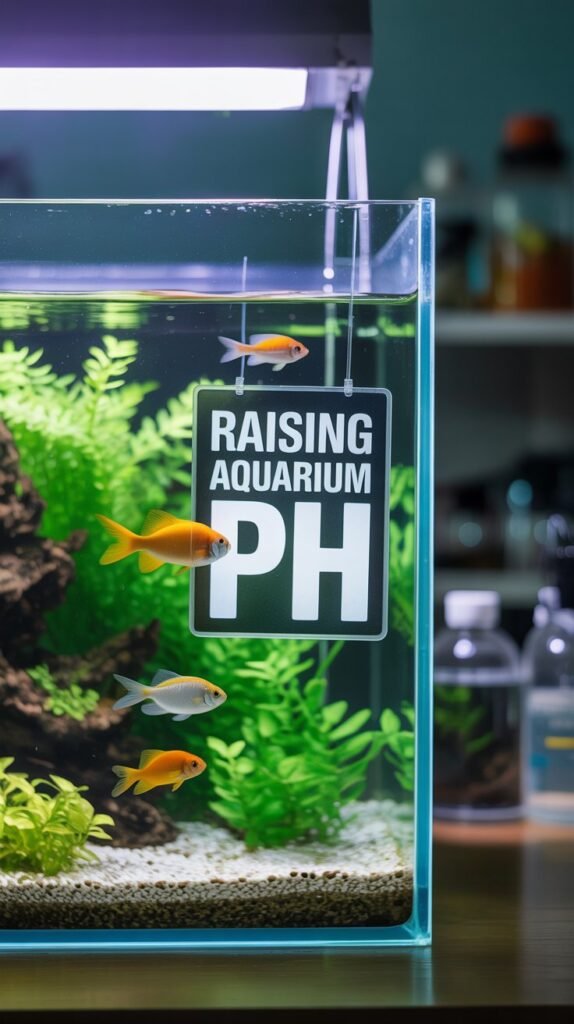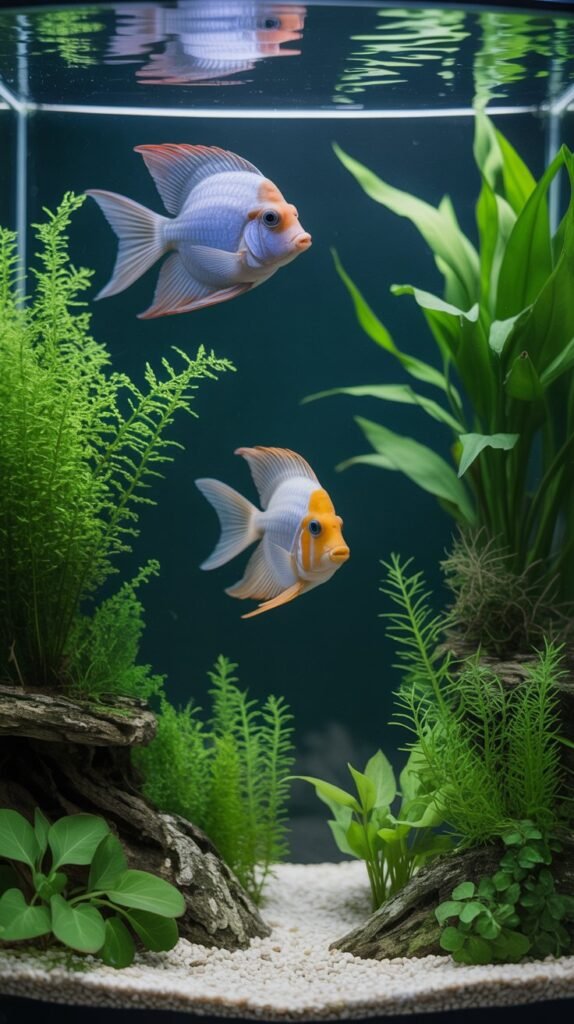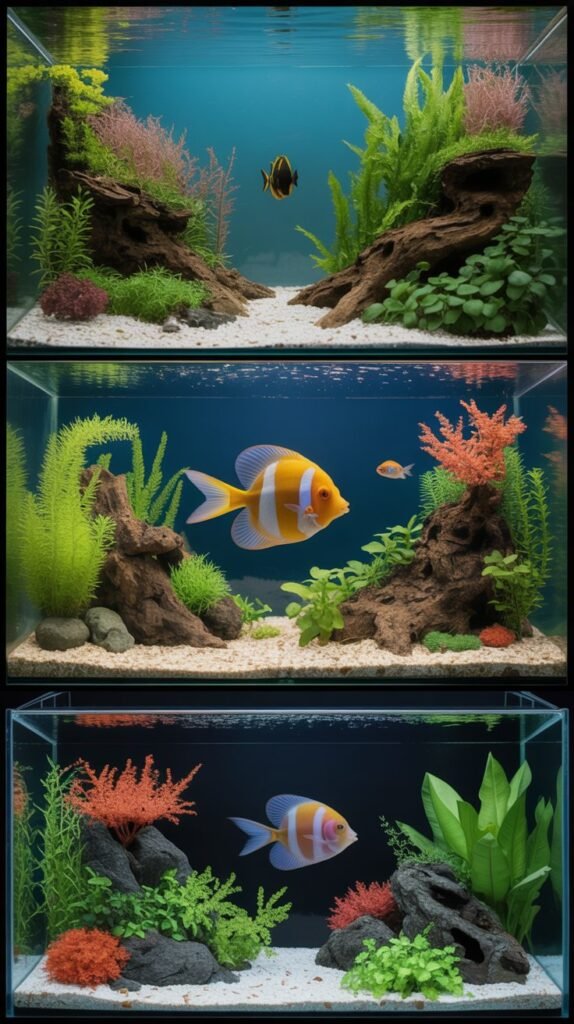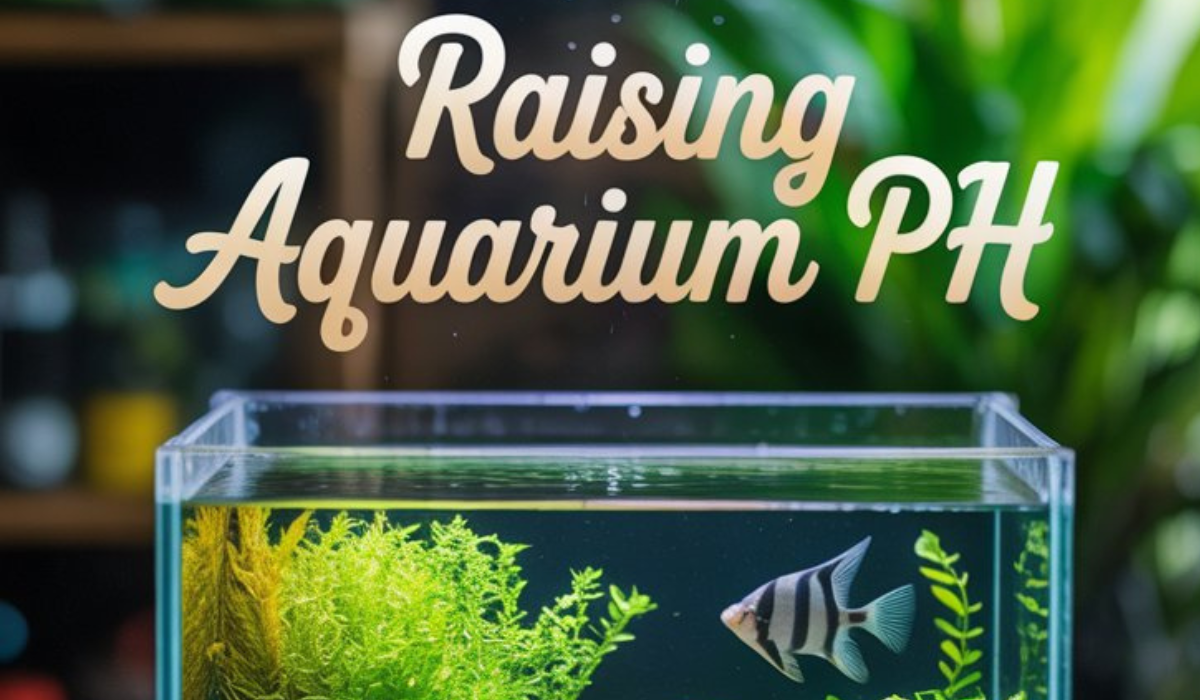Maintaining the right pH level in your aquarium is one of the most important factors for keeping fish healthy and active. The pH (potential of hydrogen) measures how acidic or alkaline your water is on a scale from 0 to 14, with 7 being neutral.
When the pH level drops too low, it can stress or even harm your fish, plants, and beneficial bacteria. Therefore, raising aquarium pH—when necessary—is an essential part of proper aquarium maintenance.
In this detailed guide, we’ll explore everything you need to know about how to raise aquarium pH safely and effectively. You’ll learn why pH levels matter, what causes them to drop, different natural and chemical methods to increase pH, and how to keep your water stable long-term.
Whether you’re a beginner or an experienced aquarist, this guide will help you create a stable and healthy environment for your aquatic life.
Understanding Aquarium pH
What Is pH?
The pH scale measures the concentration of hydrogen ions in water:
- 0–6.9 = Acidic
- 7.0 = Neutral
- 7.1–14 = Alkaline (basic)
Each step on the pH scale represents a tenfold change in acidity or alkalinity. For example, a pH of 6 is ten times more acidic than a pH of 7.

Why pH Matters
Different fish and plants thrive in different pH levels. If the pH level strays too far from what your species prefer, it can:
- Stress fish and reduce immunity
- Disrupt biological filtration
- Affect plant growth
- Kill beneficial bacteria
Consistent pH is often more important than perfection. Sudden changes are what truly harm aquatic life.
Ideal pH Levels for Common Aquarium Types
| Aquarium Type | Ideal pH Range |
|---|---|
| Freshwater Tropical | 6.5 – 7.5 |
| African Cichlid Tank | 7.8 – 8.6 |
| Goldfish Tank | 7.0 – 8.0 |
| Marine/Saltwater Tank | 8.0 – 8.4 |
| Planted Tank | 6.5 – 7.5 |
| Betta Fish Tank | 6.8 – 7.4 |
Before raising aquarium pH, check the species’ natural environment and target the ideal range. Overcorrecting can cause unnecessary stress.
Common Causes of Low pH in Aquariums
Understanding why your aquarium pH is low is the first step to fixing it. Some common reasons include:
1. Natural Waste Accumulation
Decaying fish waste, uneaten food, and plant debris release acids into the water, lowering pH over time.
2. Overcrowded Tank
Too many fish produce excess waste, leading to more organic acids and a drop in pH.
3. Insufficient Water Changes
Old water accumulates acidic compounds. Regular water changes remove these and stabilize pH.
4. Acidic Substrates or Decorations
Driftwood, peat moss, and certain substrates naturally lower pH by releasing tannins or acids.
5. Soft Water
Soft water lacks minerals like calcium and magnesium that buffer against pH changes.
6. Poor Aeration
Low oxygen levels and high carbon dioxide (CO₂) can make the water more acidic.
Testing Aquarium pH
Before adjusting pH, always test your aquarium water accurately. You can use:
- pH Test Strips: Quick and affordable, but less precise.
- Liquid Test Kits: More accurate, ideal for routine testing.
- Digital pH Meters: Provide instant, reliable readings, perfect for serious hobbyists.
Test your aquarium water at the same time daily, as pH can fluctuate slightly throughout the day—especially in planted tanks with photosynthesis.
How to Raise Aquarium pH Naturally

Natural methods are the safest and most stable way to increase aquarium pH. They work gradually, reducing the risk of shocking your fish.
1. Add Crushed Coral or Aragonite
Crushed coral and aragonite sand are rich in calcium carbonate, which gradually dissolves and raises both pH and hardness.
How to use:
- Add a small amount to your substrate or filter bag.
- Start with 1 tablespoon per 10 gallons of water.
- Monitor weekly and adjust as needed.
Best for: Freshwater tanks with consistently low pH and marine aquariums.
2. Use Limestone or Texas Holey Rock
These rocks naturally buffer water by slowly releasing minerals.
Tip: Rinse before use to avoid cloudiness and monitor pH to prevent overcorrection.
3. Aerate the Water
Increased aeration removes excess carbon dioxide (CO₂), which lowers acidity.
Methods:
- Add an air stone or sponge filter.
- Increase surface agitation with a powerhead or spray bar.
- Ensure good water movement across the surface.
4. Use Baking Soda (Sodium Bicarbonate)
A quick and effective method, but it must be used cautiously.
How to use:
- Dissolve 1 teaspoon of baking soda per 5 gallons of water.
- Add slowly and retest after 24 hours.
- Never increase pH by more than 0.3–0.4 per day.
Note: Baking soda temporarily raises pH but does not stabilize it long-term.
5. Add Seashells or Coral Skeletons
Like crushed coral, shells release calcium carbonate gradually, ideal for tanks needing gentle buffering.
Placement Tip: Place them in your filter or as decorative pieces.
6. Use Alkaline Buffer Products
Many aquarium-safe pH buffers are designed to raise and stabilize pH naturally without harming fish.
Popular brands include:
- Seachem Alkaline Buffer
- API pH Up
- Aquavitro Carbonate
Always follow manufacturer instructions carefully.
7. Change Water Source
If your tap water has low pH or low alkalinity, consider mixing it with:
- RO (Reverse Osmosis) water remineralized with alkaline buffers, or
- Hard well water (if safe and uncontaminated).
Always test new water before adding it to your aquarium.
8. Remove Acidic Materials
Check your tank for pH-lowering elements like:
- Peat moss
- Driftwood
- Leaf litter
While these are great for soft-water fish, removing them can help raise and maintain a higher pH.
How to Maintain Stable pH After Raising It

Raising pH is one step; keeping it stable is even more important. Fluctuating pH stresses fish and disrupts biological balance.
1. Perform Regular Water Changes
Change 20–30% of water weekly to remove acids and replenish minerals.
2. Clean the Substrate
Vacuum debris and uneaten food to prevent organic acid buildup.
3. Avoid Overfeeding
Overfeeding leads to waste accumulation and bacterial activity, both of which lower pH.
4. Maintain Good Filtration
A high-quality filter promotes oxygenation and prevents acid-producing waste buildup.
5. Use a pH Buffer or Alkalinity Enhancer
A buffer helps stabilize pH between water changes. Use sparingly and monitor levels.
6. Test pH Frequently
Regular testing helps you detect and correct minor drops before they become serious.
How KH and GH Affect pH Stability
KH (Carbonate Hardness):
KH measures the concentration of bicarbonates and carbonates, which act as a buffer to prevent sudden pH changes.
Low KH = unstable pH that swings easily.
High KH = stable pH that resists fluctuation.
GH (General Hardness):
GH measures calcium and magnesium content, influencing fish health and plant growth.
Tip: If your KH is below 4 dKH, your pH may be unstable. Add crushed coral, baking soda, or commercial buffers to raise it gradually.
Best Practices for Safely Raising Aquarium pH
- Always Test First: Know your current pH, KH, and GH before making adjustments.
- Go Slow: Gradual changes are safer. Aim for no more than a 0.3 increase per day.
- Use Reliable Test Kits: Digital pH meters provide precise results for fine adjustments.
- Avoid Mixing Methods: Stick to one primary method to avoid unpredictable reactions.
- Monitor Fish Behavior: Signs of stress (gasping, hiding, erratic swimming) indicate the change was too fast.
- Keep Records: Track pH readings weekly to spot patterns and maintain consistency.
Natural vs. Chemical Methods: Which Is Better?
| Aspect | Natural Methods | Chemical Methods |
|---|---|---|
| Speed | Slow and steady | Fast, often instant |
| Safety | Very safe | Risk of shock if overdosed |
| Stability | Long-term buffering | May fluctuate after effect wears off |
| Best For | Beginners, planted tanks | Emergency pH adjustments |
Whenever possible, use natural methods to raise pH. Chemical buffers are best reserved for urgent situations or advanced aquarists who understand precise dosing.
Effects of Incorrect pH Levels on Fish
Low pH Effects:
- Fish become stressed or lethargic.
- Reduced immunity leads to diseases.
- Poor breeding behavior.
- Plant decay and algae overgrowth.
- Filter bacteria become less effective.
High pH Effects (Overcorrection):
- Ammonia becomes more toxic.
- Fish gills can burn or irritate.
- Reduced oxygen solubility in water.
The key is balance and stability—not extreme correction.
Special Considerations by Tank Type
1. Freshwater Aquarium
Most freshwater community tanks thrive between pH 6.5–7.5. If pH drops below 6.0, bacteria efficiency drops, leading to poor filtration.
Use crushed coral or alkaline buffers to stabilize.
2. African Cichlid Tanks
African cichlids from lakes Malawi and Tanganyika prefer alkaline water (7.8–8.6).
Using aragonite sand and limestone rocks both beautifies the tank and naturally maintains high pH.
3. Planted Tanks
Plants absorb CO₂ during the day and release it at night, causing daily pH swings.
Ensure good aeration and stable CO₂ injection (if used) to minimize fluctuations.
4. Marine/Saltwater Aquariums
Saltwater tanks naturally maintain pH between 8.0–8.4, but poor aeration or high organic load can drop it.
Use reef buffers and proper protein skimming to maintain stability.
Troubleshooting: When pH Won’t Stay Up
If your pH keeps dropping even after adjustments:
- Check KH Levels: Low carbonate hardness means water cannot buffer acids.
- Increase Aeration: Remove excess CO₂ buildup.
- Clean the Tank: Waste buildup constantly produces acids.
- Reevaluate Your Source Water: Your tap or RO water might have naturally low pH.
- Avoid Acidic Decorations: Driftwood or peat may be pulling it down.
By identifying the root cause, you can fix the problem permanently rather than relying on quick fixes.
Long-Term Strategies for pH Stability
- Use high-quality substrate that doesn’t leach acids.
- Maintain consistent water change schedules.
- Avoid using unfiltered rainwater or acidic water sources.
- Keep KH above 4 dKH for reliable buffering capacity.
- Regularly clean filters and gravel to prevent waste buildup.
- Add biological supplements to boost bacterial balance.
Stable pH equals a healthy, thriving aquarium.
Conclusion
Maintaining the right pH level is one of the pillars of successful fishkeeping. When the water becomes too acidic, raising aquarium pH safely ensures your fish stay healthy, active, and stress-free.
Whether you use natural methods like crushed coral and aeration or chemical buffers for rapid results, remember to go slow, test often, and prioritize stability over speed.
By understanding your tank’s chemistry, source water, and fish requirements, you’ll achieve a beautifully balanced ecosystem where aquatic life thrives for years to come.
FAQs About Raising Aquarium pH
1. What is the fastest way to raise aquarium pH?
The fastest way is to add baking soda, but it should be done gradually and carefully to prevent shocking fish.
2. Can I raise pH naturally without chemicals?
Yes, using crushed coral, limestone, or aeration can naturally increase pH without chemical additives.
3. How often should I test my aquarium’s pH?
Test at least once or twice a week, and after major water changes or when adding new fish.
4. Does driftwood lower pH?
Yes, driftwood releases tannins that make water more acidic, lowering pH over time.
5. What should I do if my pH drops suddenly?
Perform a partial water change, test KH levels, and increase aeration to stabilize the environment.
6. How long does it take to raise aquarium pH naturally?
It may take several days to weeks, depending on your tank size and method used.
7. Can high pH harm my fish?
Yes. If pH rises too quickly or too high, it can increase ammonia toxicity and stress fish.
8. Do live plants affect pH levels?
Yes. Plants absorb CO₂ during the day, raising pH slightly, and release CO₂ at night, lowering it.
9. Is baking soda safe for fish?
In small, controlled doses, yes—but it should be added slowly to avoid rapid pH changes.
10. How do I prevent pH fluctuations?
Maintain stable KH, perform regular water changes, and avoid overfeeding or waste buildup.

